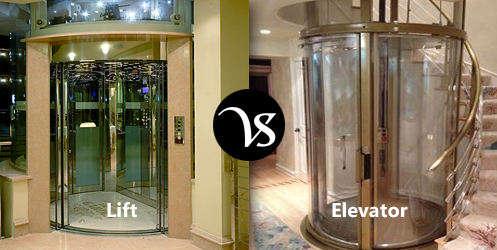 Lift:
Lift:
Lift is a result of pressure differences and depends on angle of attack, airfoil shape, air density and airspeed. Lifts are designed to transport only one person. Lifts are the machines which lift us up to our desired level.
Elevator:
An elevator is a type of vertical transport equipment that efficiently moves people or goods between floors of a building. Sometimes the elevator is used for under construction buildings. Mostly the term elevator is used in USA.
Differences:
| Basis | Lift | Elevator |
|---|---|---|
| Definition (www.oxforddictionaries.com) | Move upwards; be raised. | A machine consisting of an endless belt with scoops attached, used for raising grain to an upper storey for storage. |
| Synonyms | Ride, passage, run, drive, transport and ride | Conveyer, hoist, dumbwaiter, escalator |
| Antonyms | Ill will, harm | Downfall, dropper, shrink, dipper and degrader |
| Types | Its types are:
|
Its types are:
Passenger elevator
Freight elevator
Double deck elevator |
| History | The first ever lift was designed to lift a passenger in 1743. This was made exclusively for King Louis in France. | From about the middle of the 19th century, elevators were powered, often steam-operated, and were used for conveying materials in factories, mines, and warehouses. |
| Word origin | It was originated from the Middle English: from Old Norse lypta, of Germanic origin; related to loft. | It was originated in Mid-17th century (denoting a muscle): modern Latin, from Latin elevare ‘raise’; in later use directly from elevate. |
| Pronunciation |
|
|
| Term used | Lift is the term used in the UK. | Elevator is the term used in USA. |
| Advantages/Benefits | Its advantages are:
|
Its advantages are:
|
| Disadvantages | Its disadvantages are:
|
Its disadvantages are:
|
| Example in Sentence |
|
|





